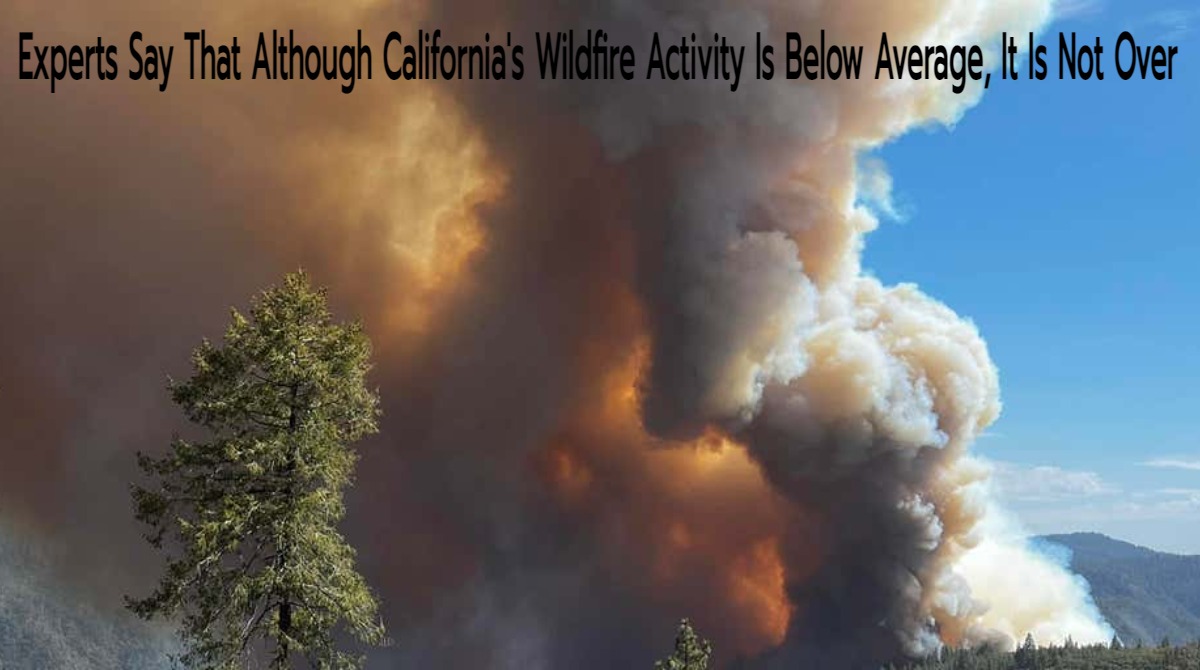Experts tell CNN that wildfire activity in California has been noticeably lower this year. Especially compared to 2020 and 2021. When devastating wildfires ragged by the end of the summer, had burned millions of acres across the state.
This year has seen several severe fires in California, including the Mosquito Fire, which is still burning east of Sacramento.
Craig Clements, director of the Fire Weather Lab at San Jose State University Peak fire activity. It is delayed by damp spring weather and cool temperatures.
Clements told CNN, “But we’re not out of the woods yet”. Offshore hot and dry winds, also known as the Diablo or Santa Ana winds. They can cause massive wildfires. In the fall and winter, the wind phenomenon usually begins.
“If those big offshore wind events we get like the Santa Anas in Southern California. Diablo winds in Northern California,” he says, “could lead to bigger fires.”
As per the Call, Fire Battalion Chief Jon Heggie of California, wildfires have burned approximately 365,000 acres this year. Significantly less than the year-to-date acreage. By August 2021, more than 2.5 million acres had burned, compared to 4.3 million in 2020.
Heggie described this year’s burned acreage as a “dramatic” decrease compared to previous years.

Nonetheless, California is still suffering from a multiyear megadrought that has depleted. Water supplies have been exhausted, and vegetation has been primed for landscape-altering wildfires. According to the US Drought Monitor, drought conditions exist in 99% of the state, which scientists believe is one of the reasons California has seen an increase in fire activity in recent years.
Clements attributed this year’s lower-than-average fire activity to luck, firefighting strategies, and day-to-day weather.
The weather in the spring was pleasant, with cooler temperatures and some precipitation, but the weather in the summer was hotter and drier. California experienced one of the worst September heat waves, stoking the state’s current active fires. It includes the Mosquito Fire, which has burned over 76,000 acres and is the state’s most significant this year, according to Call Fire.
“While climate change has left its mark on these larger fires, it’s the day-to-day weather that drives fire behaviour,” he explained.
Climate scientist Daniel Swain of the University of California, Los Angeles, claims that even though fewer acres have been burned this year, the individual wildfires have been very lethal and destructive. The fires this year have killed nine people and destroyed nine homes and over 800 structures, according to Call Fire.

“When people talk about this. They often talk about the acreage burned, which not only doesn’t tell the entire story, but it may not tell the majority of what is “Swain,” says something significant in terms of why we care about wildfires in a societal context stated by CNN. “Because the fire size was less than in previous years, the impacts of these fires were still extremely severe.”
While the number of acres burned is lower than in the previous five years, Heggie says Fire conditions in California can shift rapidly as the seasons change.
“It can change very quickly in California, so even though we’re thinking about it as a transition time, we will remain vigilant and encourage the public to do the same,” Heggie said.
According to Janice Coen, a National Center for Atmospheric Research scientist, there hasn’t been a significant outbreak of fires in the West this summer because not all conditions have been present at the same time.
“Even though there have been many ignitions across the country,” Coen told CNN, “there hasn’t been the alignment of conditions to allow very many of them to grow large.” “Things may change in the future. We’re approaching a time when a different type of fire is more likely so that Southern California may see more activity than usual “.
Human-caused climate change has contributed to the severity and frequency of extreme fire events. The West’s drought and intense heat waves laid the groundwork for dozens of major wildfires in recent years. Even though the climate crisis is worsening, experts say there is still year-to-year variability.

According to the National Interagency Fire Center. The risk of large fires igniting in California will be low for the rest of the week. Due to above-average vegetation moisture caused by recent rainfall, including Hurricane Kay.
Individual rain events, according to Swain, will not end the deep-rooted drought. But they will help ease fire conditions in the short term.
“It’s one of those weather patterns where it’s boom or bust,” Swain said of the rain. “Either we get a decent amount of rain, or we get nothing. So fingers crossed, but it’s been a weird year.”

